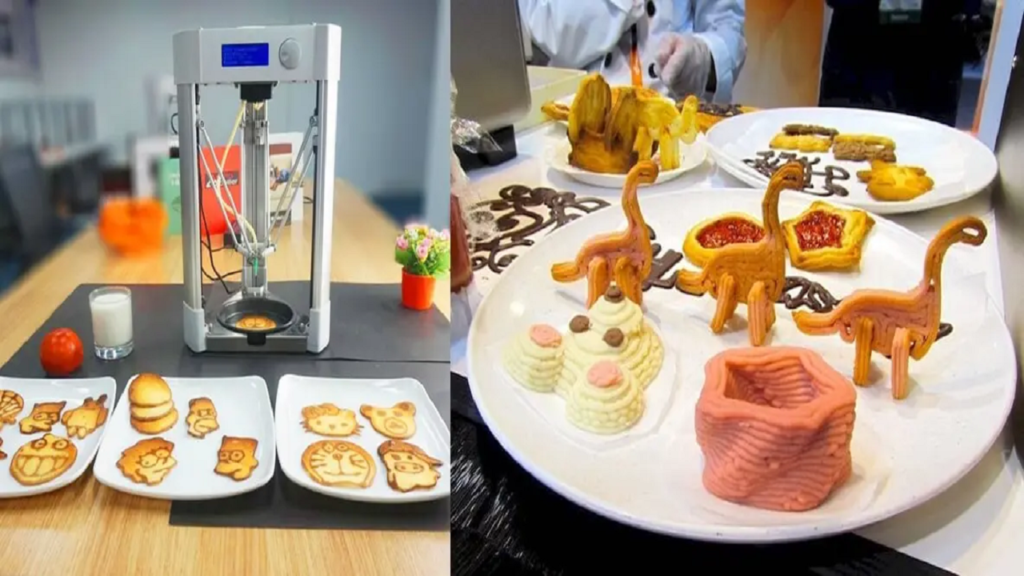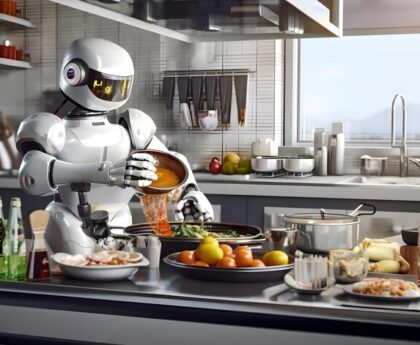Introduction:
In the ever-evolving landscape of culinary arts, a groundbreaking innovation is leaving its mark on the kitchen counter – 3D food printing. As technology continues to weave its way into the fabric of our daily lives, the convergence of gastronomy and 3D printing is redefining the way we think about, prepare, and consume food. This article explores the fascinating world of 3D food printing, from its humble beginnings to its potential to reshape the future of how we experience and enjoy our meals.
The Birth of 3D Food Printing: A Recipe for Innovation
In the early 2000s, 3D printing was predominantly associated with manufacturing and prototyping. However, a visionary shift occurred when researchers and chefs began to experiment with adapting this technology to the culinary realm. The concept was simple yet revolutionary: instead of printing with plastic or metal, why not use edible materials to create intricate and personalized dishes?
How 3D Food Printing Works: From Pixels to Palate
At its core, 3D food printing involves the layer-by-layer deposition of edible materials to create three-dimensional, edible structures. The process typically begins with a digital model or design, much like a traditional 3D printing project. However, in the realm of gastronomy, the “ink” comprises edible ingredients such as chocolate, dough, purees, or even plant-based materials.

Culinary Creativity Unleashed: Designing Edible Art
One of the most intriguing aspects of 3D food printing is its ability to turn chefs into digital sculptors. The technology enables the creation of intricate designs and patterns that would be impossible or extremely time-consuming to achieve by hand. From geometric shapes to lattices of chocolate and beyond, 3D food printing opens up new avenues for culinary creativity.
Personalized Nutrition: Tailoring Meals to Individual Tastes and Needs
As the world becomes more conscious of individual dietary needs, 3D food printing offers a solution that goes beyond one-size-fits-all. The ability to precisely control the composition of food at a molecular level allows for the customization of meals to cater to specific nutritional requirements, allergies, and taste preferences.
Sustainability in the Spotlight: Reducing Food Waste with 3D Printing
Beyond its creative applications, 3D food printing has the potential to address pressing issues in the food industry, such as food waste. By using raw materials more efficiently and creating precisely portioned meals, this technology has the capacity to contribute to a more sustainable and environmentally friendly approach to food production.
From Prototype to Plate: Commercial Applications of 3D Food Printing
The initial experimental phase has paved the way for practical applications of 3D food printing in commercial settings. Restaurants, catering services, and even space agencies are exploring the integration of this technology into their culinary practices. The ability to produce consistent and visually stunning dishes offers a unique selling point for those looking to stand out in the competitive world of gastronomy.
Challenges and Future Prospects: Navigating the 3D Culinary Landscape
Despite its potential, 3D food printing is not without challenges. Issues such as texture, flavor, and the range of printable ingredients are areas that researchers and chefs are actively addressing. The future of 3D food printing holds promises of more accessible, user-friendly machines, expanded ingredient options, and increased integration into everyday kitchens.
The Ethical Dimension: Exploring the Morality of Printed Meat and Beyond
As 3D food printing advances, ethical considerations come to the forefront, particularly when it comes to the possibility of printing meat. The debate surrounding lab-grown or printed meat raises questions about animal welfare, environmental impact, and the future of our relationship with food. How society navigates these ethical considerations will undoubtedly shape the trajectory of 3D food printing.
Conclusion: Nourishing the Future, One Layer at a Time
In the grand tapestry of culinary innovation, 3D food printing emerges as a vibrant thread, weaving together creativity, sustainability, and personalization. As this technology continues to evolve, it challenges our perceptions of what is possible in the kitchen and invites us to explore the intersection of gastronomy and cutting-edge technology. The future promises a buffet of possibilities, where 3D food printing transforms not only the way we eat but also the way we think about the art of cooking itself. As we savor the potential of this delectable revolution, the culinary world stands on the cusp of a new era, sculpting the future of food, one layer at a time.



